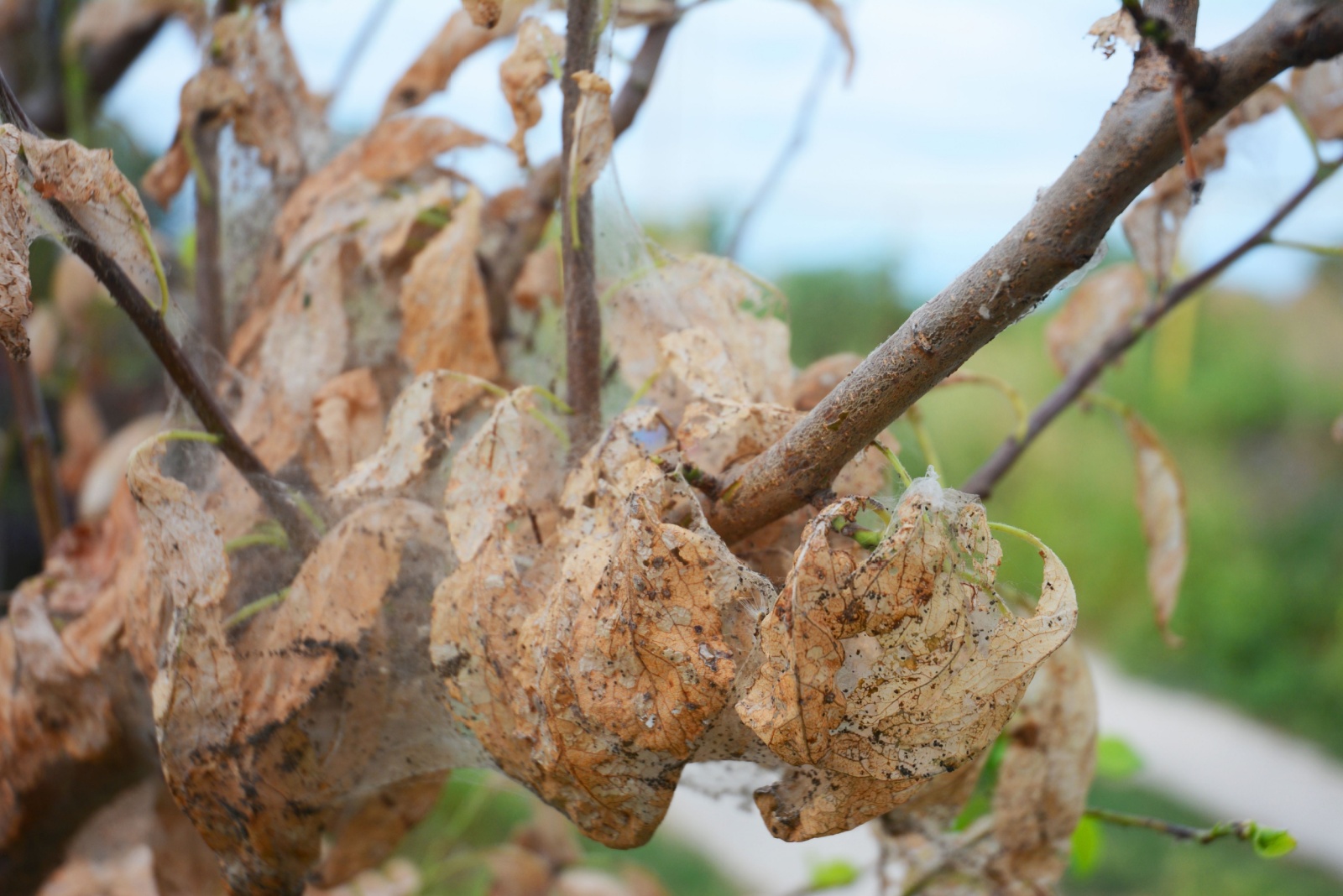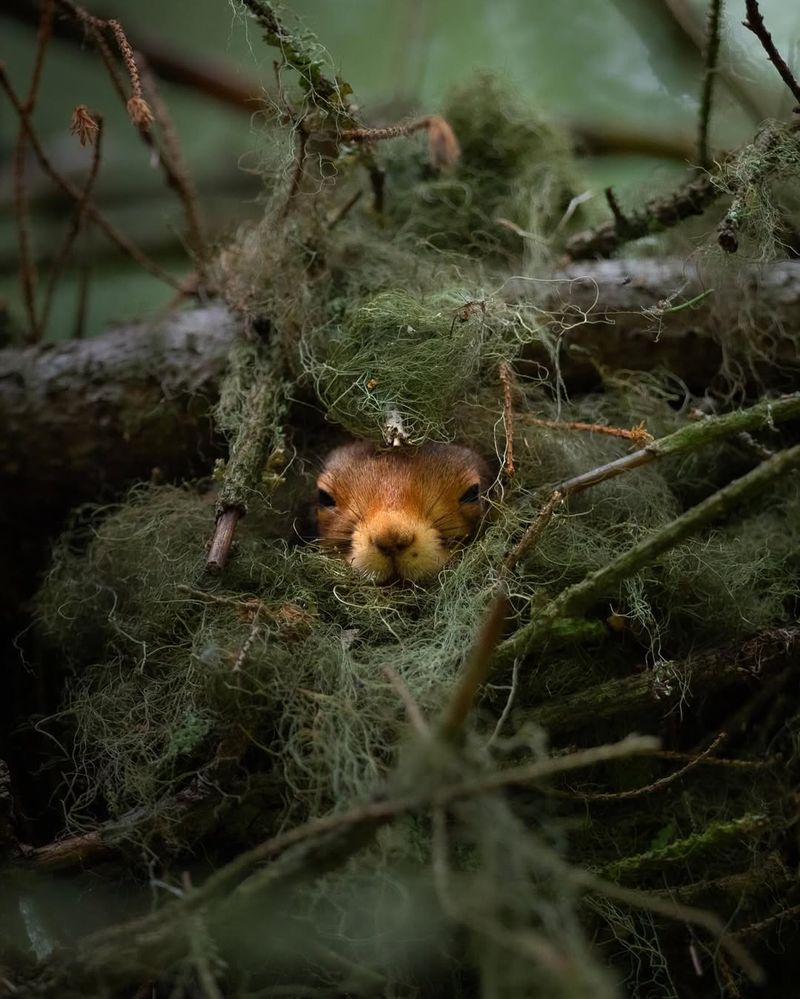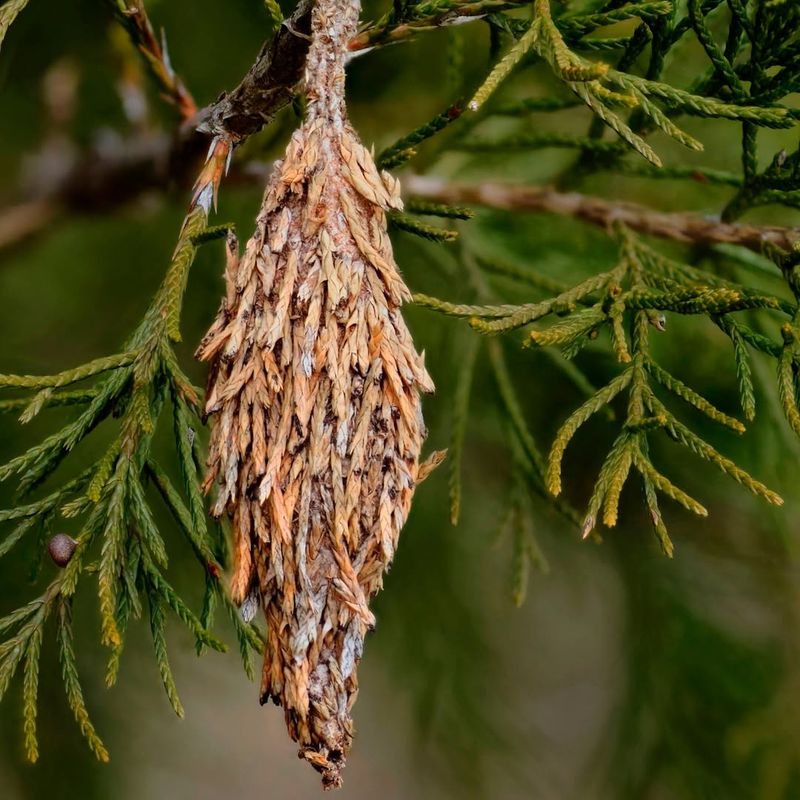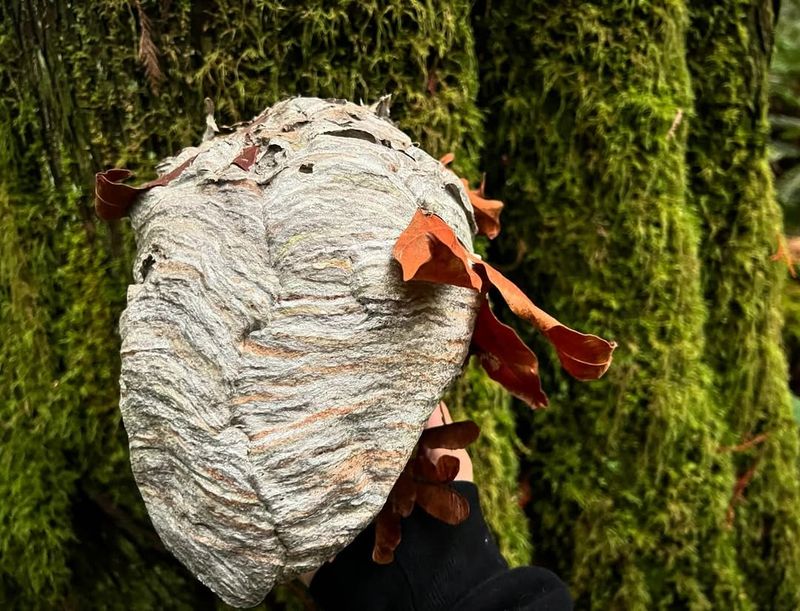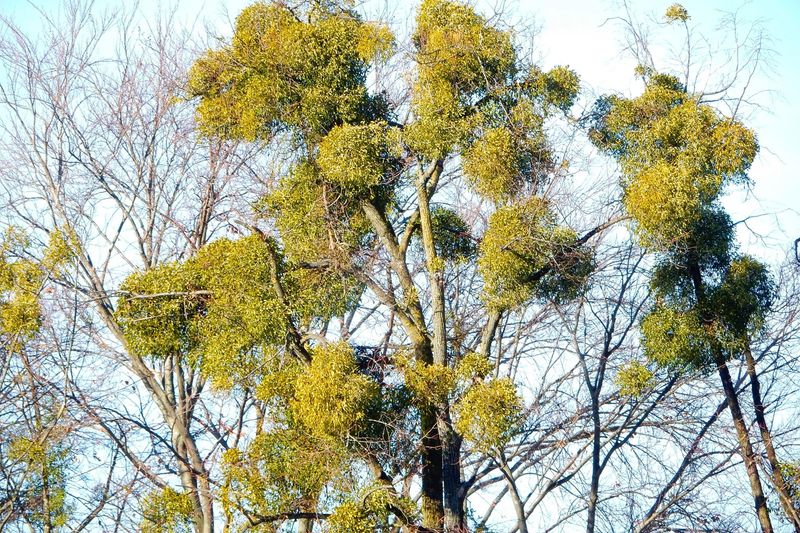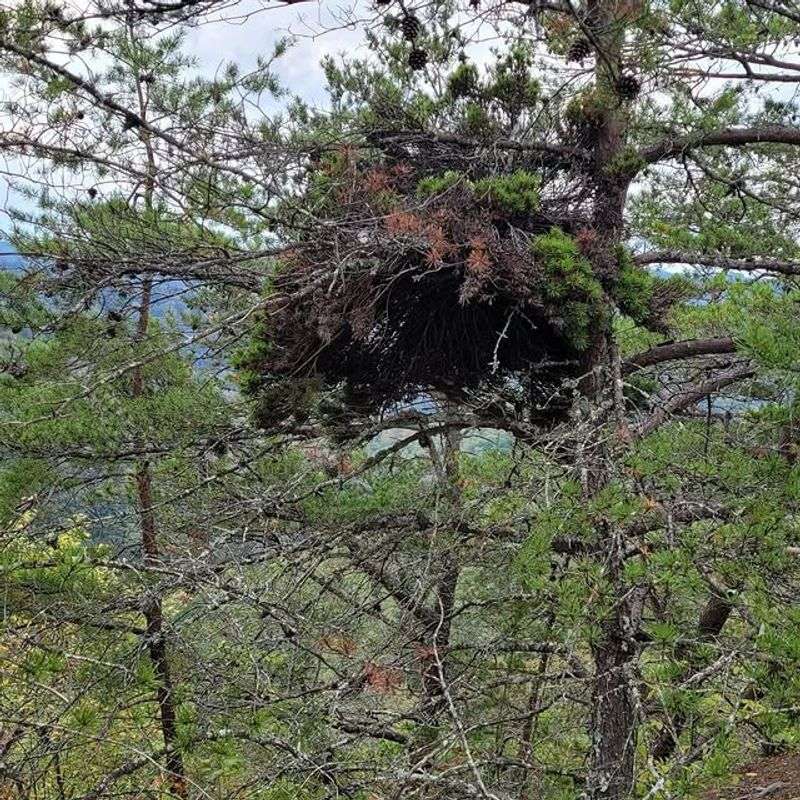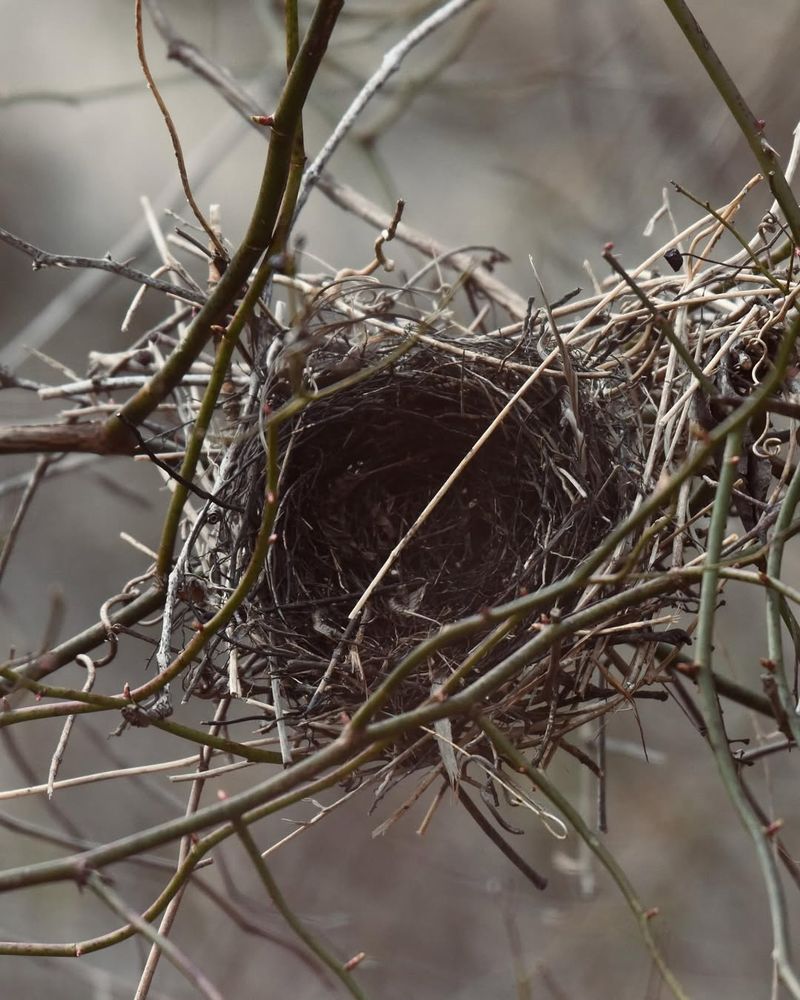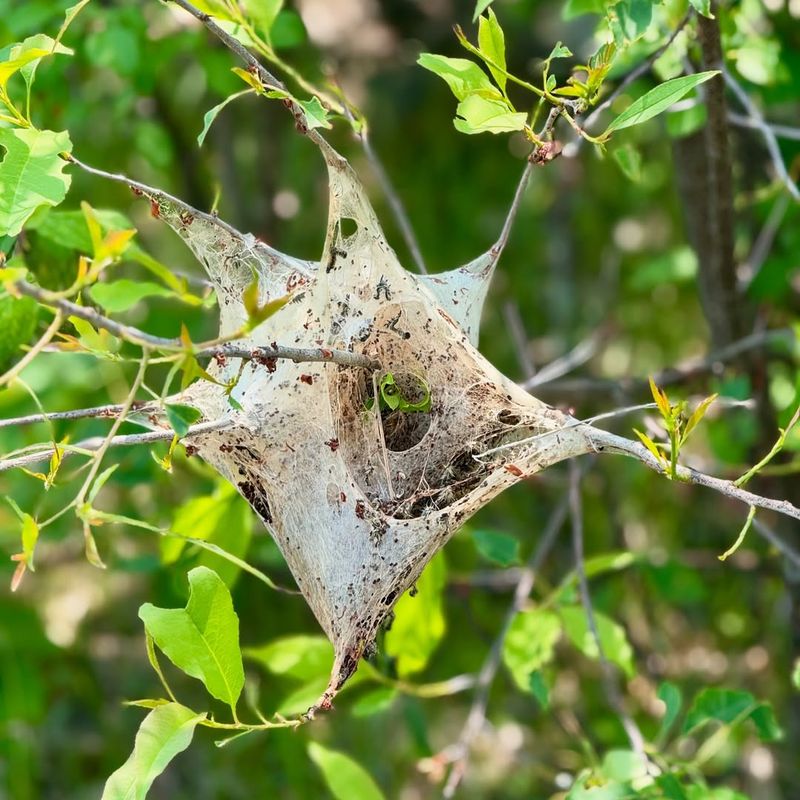Think you’ve spotted a cozy bird nest in your backyard tree? Not so fast! In Nevada, appearances can be deceiving. That tangled clump in the branches might not be feathers and twigs but something far stranger—from insect-made “homes” to plant oddities you’d never expect.
One thing’s for sure: when it comes to backyard mysteries, Mother Nature has a few tricks up her sleeve.
1. A Squirrel’s Leafy Hideaway
Squirrels are master builders who create cozy homes called dreys high in Nevada’s trees. Unlike bird nests made mostly of twigs, dreys are round balls of leaves, bark, and moss that can be as big as a basketball.
Look for these structures in the fork of branches during fall and winter when leaves drop. Squirrels often build multiple dreys as backup shelters.
If you spot one, leave it alone unless it’s causing damage to your tree’s structure.
2. Bagworm Infestation Danger
Bagworms create small cone-shaped cases that hang from branches and look like miniature pinecones or ornaments. These destructive caterpillars weave silk bags covered with bits of leaves and twigs from your tree.
A heavy infestation can strip a tree completely bare and even kill it within a single season. Nevada’s juniper and pine trees are particularly vulnerable to these sneaky pests.
Remove bags by hand during winter months before the eggs hatch in spring.
3. Wasp Or Hornet Colony
Paper wasps and hornets construct gray, papery nests that might initially look like bird nests from a distance. Made from chewed wood fibers mixed with saliva, these nests have a distinctive umbrella or round shape with visible hexagonal cells.
Nevada’s warm climate makes trees ideal spots for these stinging insects to establish colonies. Active nests pose serious risks, especially if you have children or pets playing nearby.
Never attempt removal yourself—call a professional exterminator immediately.
4. Mistletoe Parasite Growth
Mistletoe creates dense, bushy clumps that resemble nests but are actually parasitic plants stealing nutrients from your tree. This evergreen plant sends roots deep into branches, weakening the tree’s structure over time.
Common on Nevada’s cottonwoods and willows, mistletoe stays green year-round while host trees lose leaves. Heavy infestations can cause branch dieback and make trees more susceptible to disease.
Prune infected branches at least a foot below the mistletoe to prevent regrowth.
5. Witches’ Broom Disease
Witches’ broom creates unusual clusters of dense, tangled branches that sprout from a single point and look remarkably nest-like. Caused by fungi, viruses, or insects, this abnormal growth pattern makes branches grow in tight bunches instead of spreading naturally.
Nevada’s stressed trees are particularly vulnerable during drought conditions. While not immediately fatal, witches’ broom weakens trees and makes them less attractive.
Pruning affected branches several inches below the broom helps maintain tree health and appearance.
6. Abandoned Hawk Or Owl Nest
Large birds of prey like hawks and owls build substantial platform nests that can measure several feet across. Made from thick sticks and branches, these structures often remain visible long after the birds have moved on.
Nevada’s tall pines and cottonwoods provide perfect nesting sites for raptors. Old nests might later house squirrels, owls, or other wildlife looking for ready-made homes.
Watch from a distance and never climb to investigate, as protected species might return to reuse the nest.
7. Tent Caterpillar Webbing
Tent caterpillars spin silky webs in tree crotches that expand into large, messy structures resembling abandoned nests. Unlike bagworms, these social caterpillars work together to create communal shelters where hundreds gather between feeding sessions.
Spring brings these pests to Nevada’s fruit and ornamental trees. While rarely fatal to healthy trees, repeated defoliation weakens them significantly.
Remove webs early in the morning when caterpillars are inside, then destroy them to prevent tree damage and spreading.

